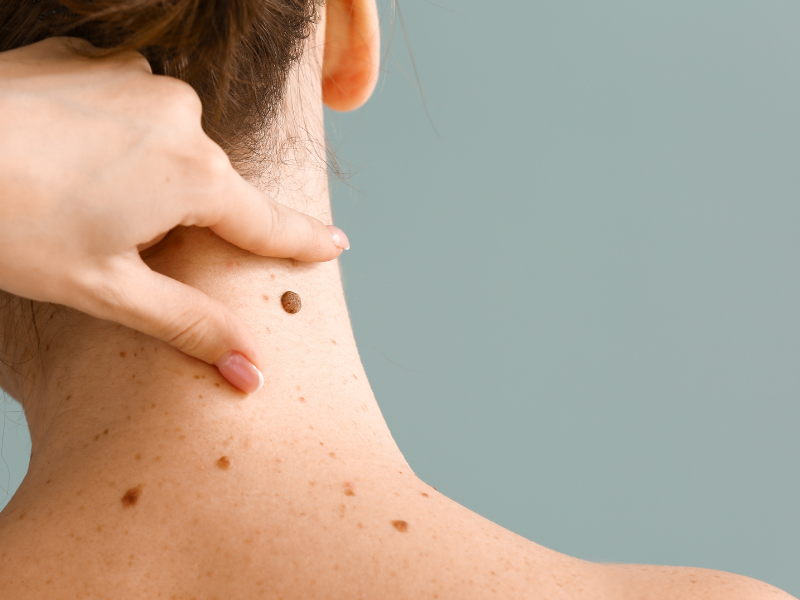Main Image: © pixelshot via Canva.com
Redheads are at an increased risk of skin cancer, specifically melanoma. That’s why it’s extremely important we know not only how to avoid it (by using sunscreen and proper sun protection), but we also need to know how to spot it. Skin cancer can often be removed to avoid spreading and is one of the most curable forms of cancer. But, knowing the signs to catch it early is crucial. Absolutely crucial.
1. Know where to look
Melanoma skin cancer can develop anywhere on the body, but the most common areas are those that have exposure to the sun. The face, neck, back, arms, and legs are among the most common places for melanoma to develop.
2. Watch your moles & freckles
Moles are completely normal and most moles are nothing to worry about. However, if you see a change in an existing mole, you should get it checked out right away. Non-cancerous moles are generally uniform in color and are smaller than .25” in diameter. While they may change slightly over the years, they usually don’t change too much, so if you see them changing get them checked out promptly. The same goes for freckles — although new freckles are normal, look for changes in the shape or color of freckles, or look for raised freckles. These may not be freckles at all and could be melanoma spots.
3. Look for new skin growths
Any new skin growth should be looked at by your dermatologist. New skin growths may come with age or changes in your body, and many of them may be as harmless as a mole, skin tag, or freckle. But, they may be signs of skin cancer so it’s better to have them checked out.
4. Know Your ABCs…
According to the Mayo Clinic, there’s a simple trick you can use when determining if a mole, or freckle, may be something to be concerned about. You just need to use the letters ABCDE:
- A is for asymmetrical shape. Look for moles with irregular shapes, such as two very different-looking halves.
- B is for irregular border. Look for moles with irregular, notched, or scalloped borders — characteristics of melanomas.
- C is for changes in color. Look for growths that have many colors or an uneven distribution of color.
- D is for diameter. Look for new growth in a mole larger than 1/4 inch (about 6 millimeters).
- E is for evolving. Look for changes over time, such as a mole that grows in size or that changes color or shape. Moles may also evolve to develop new signs and symptoms, such as new itchiness or bleeding.
Rock it like a Redhead!
RELATED POSTS
READ: Redheads with Moles Contribute to an Increased Melanoma Risk
READ: Freckles & Moles: This Is When Redheads Should Get Checked By A Dermatologist



